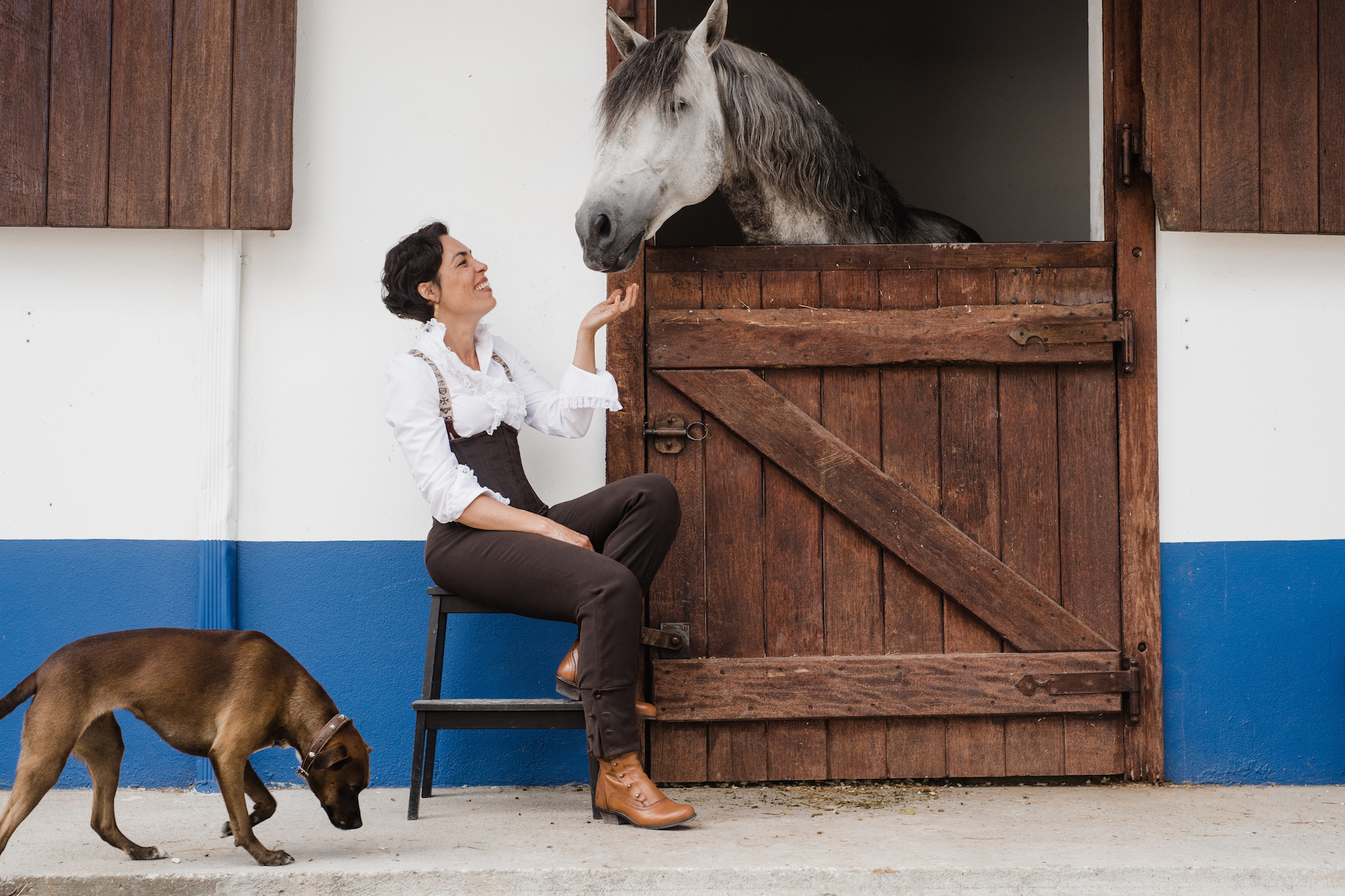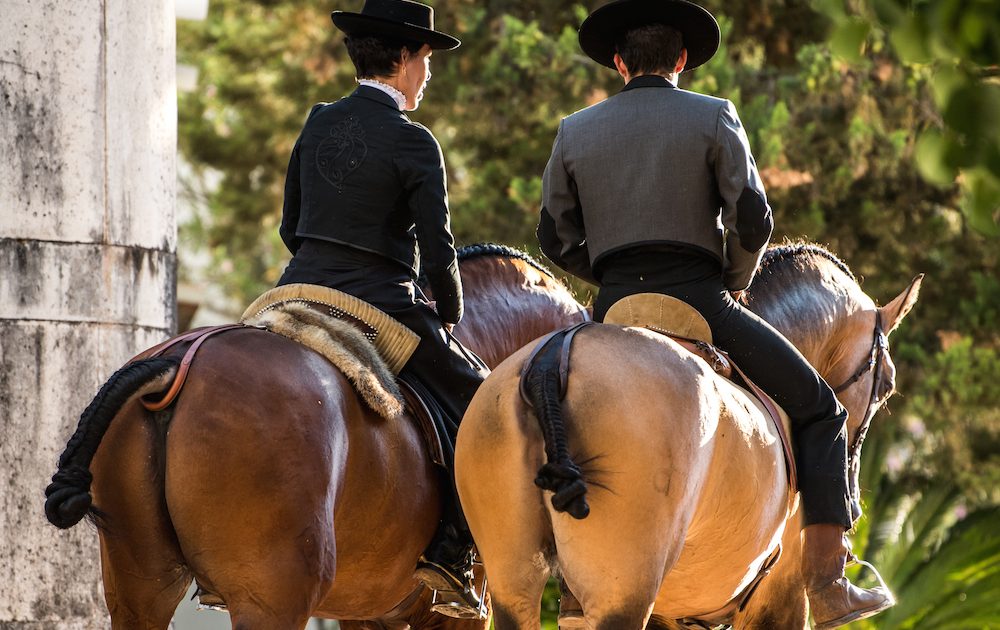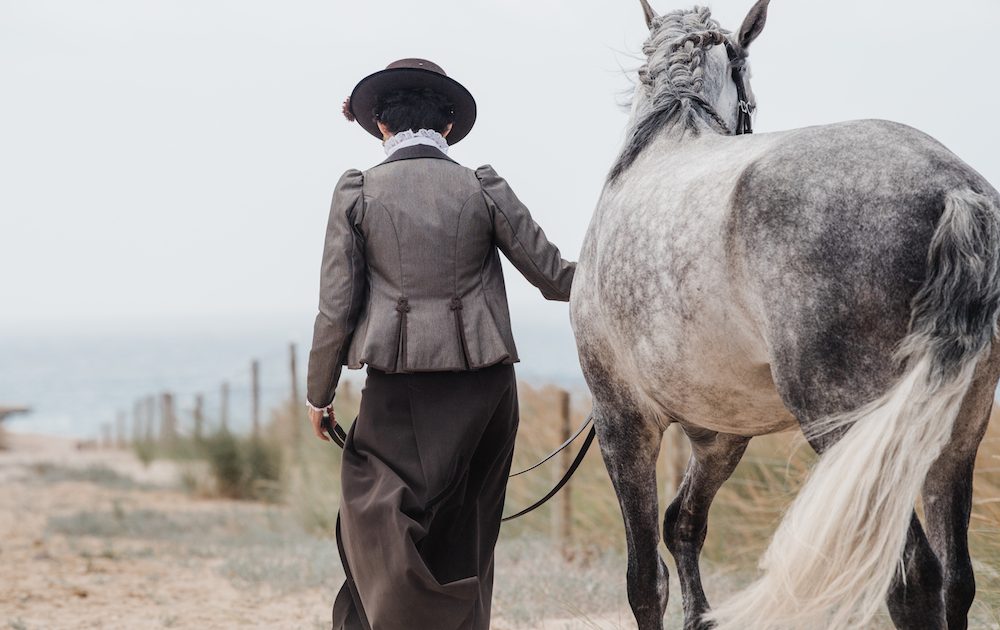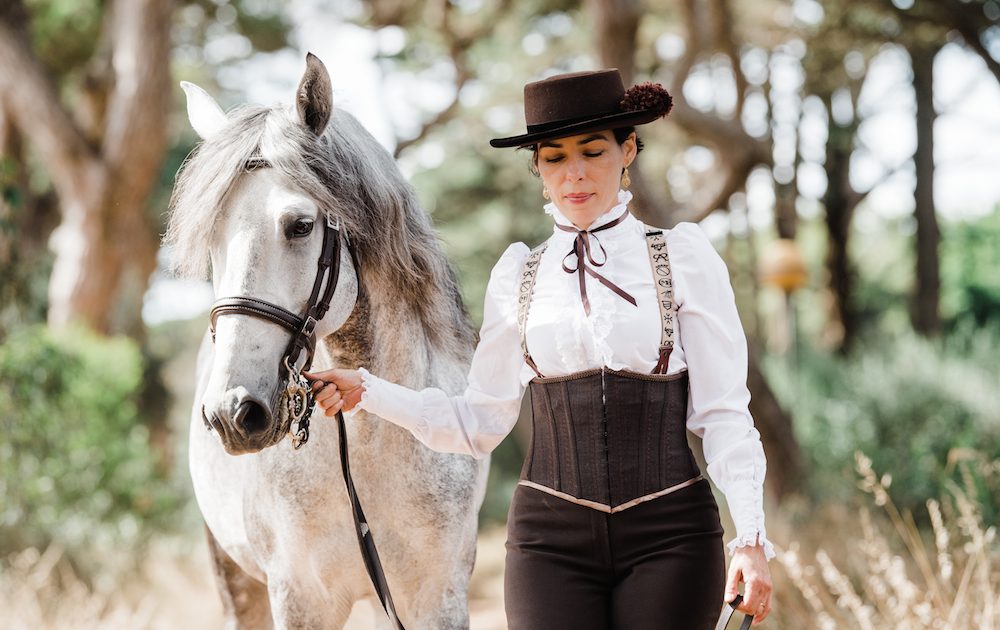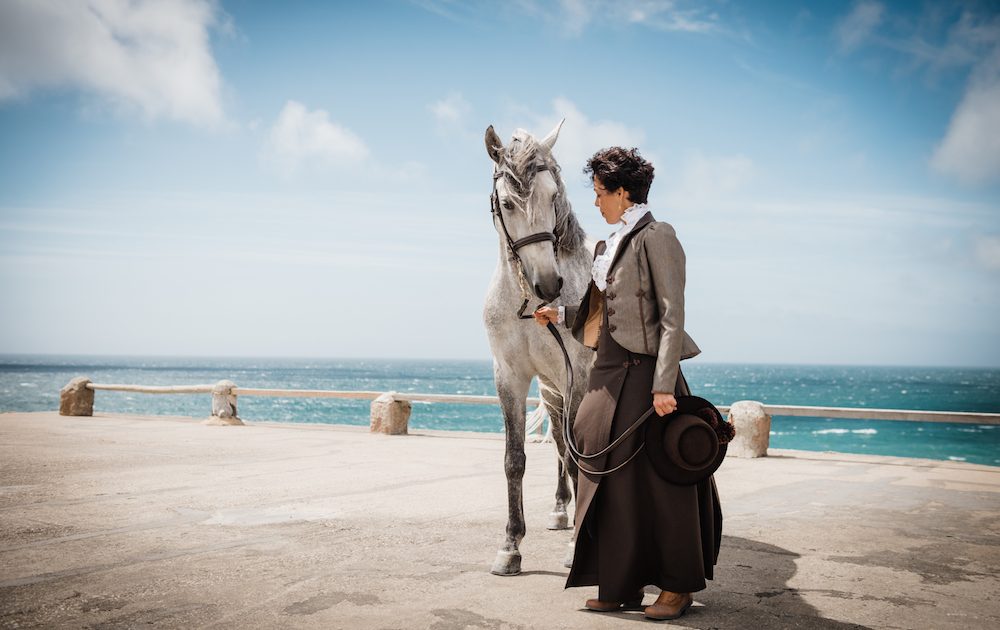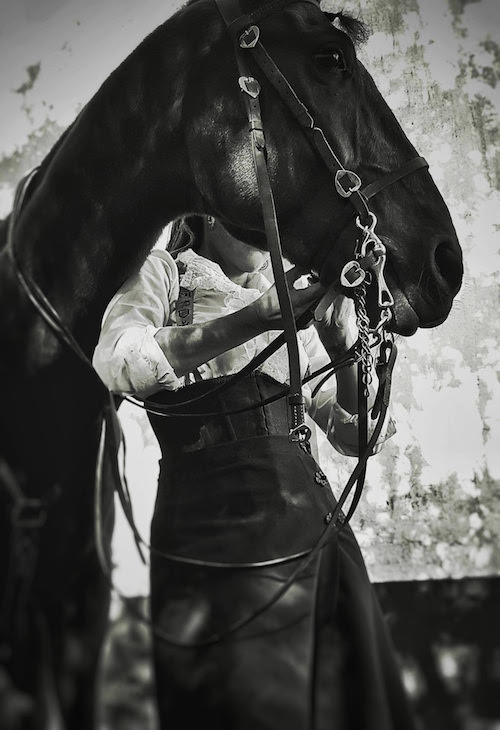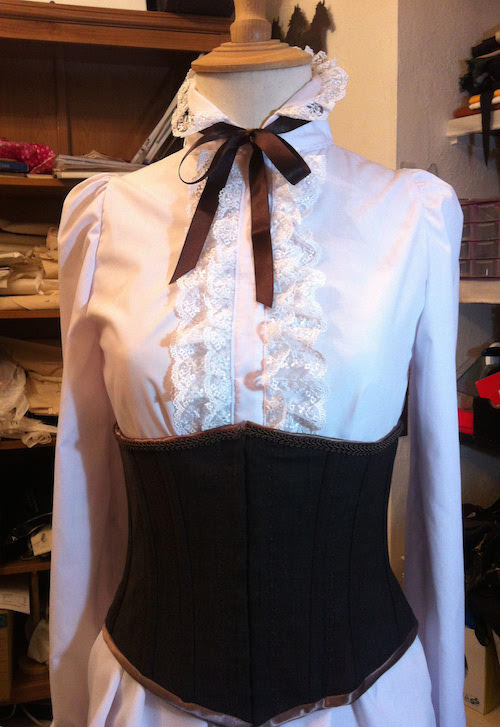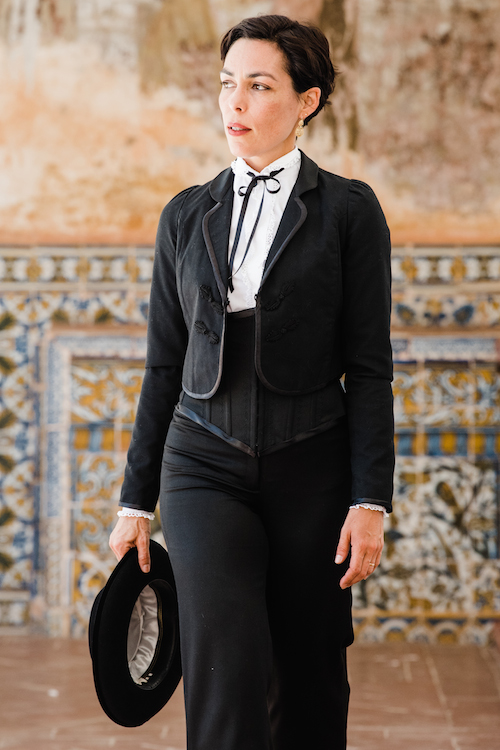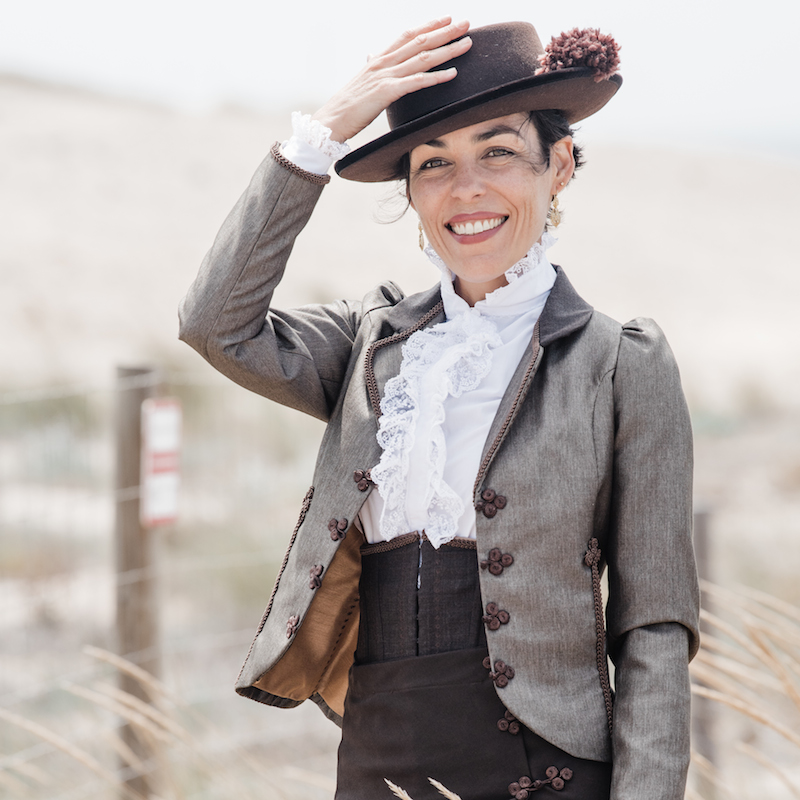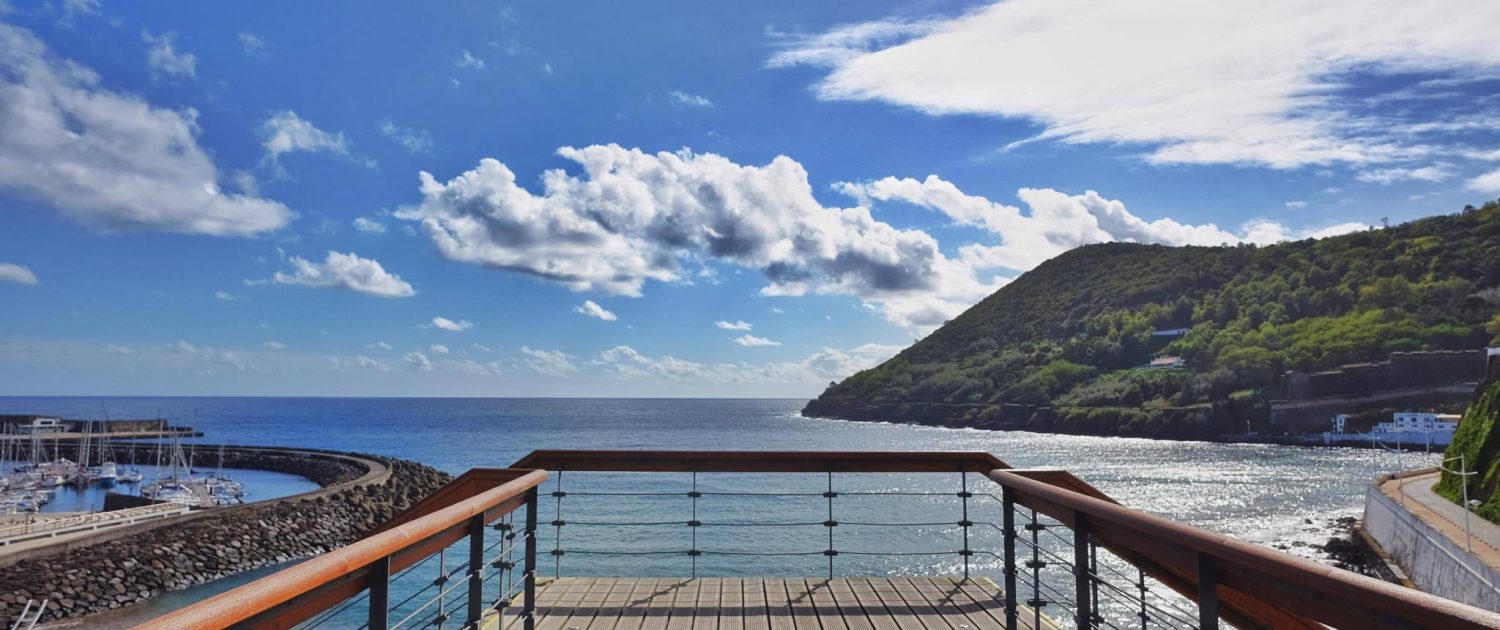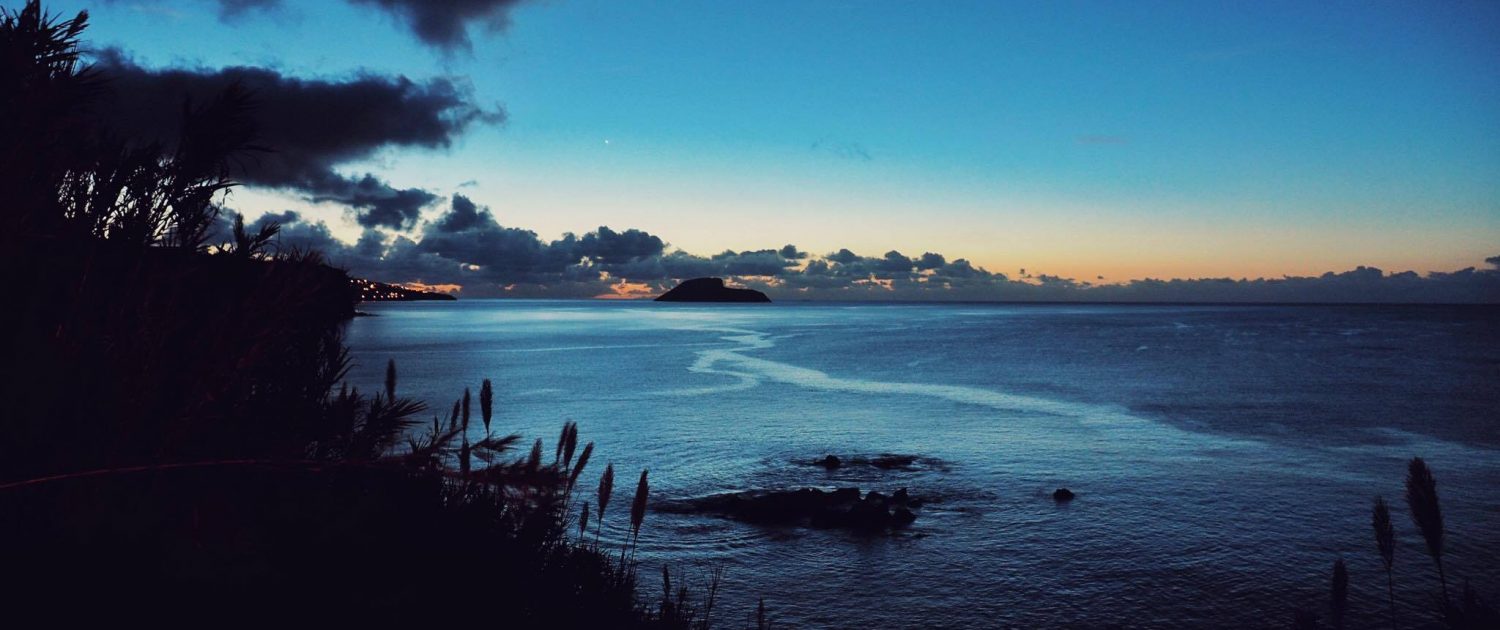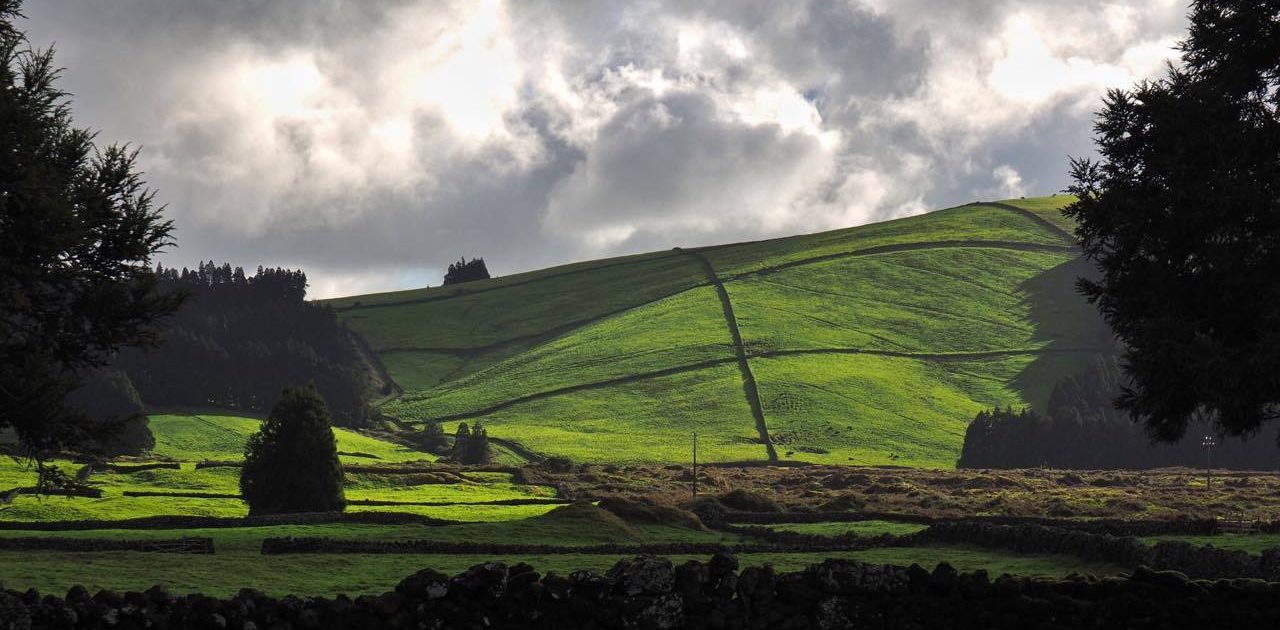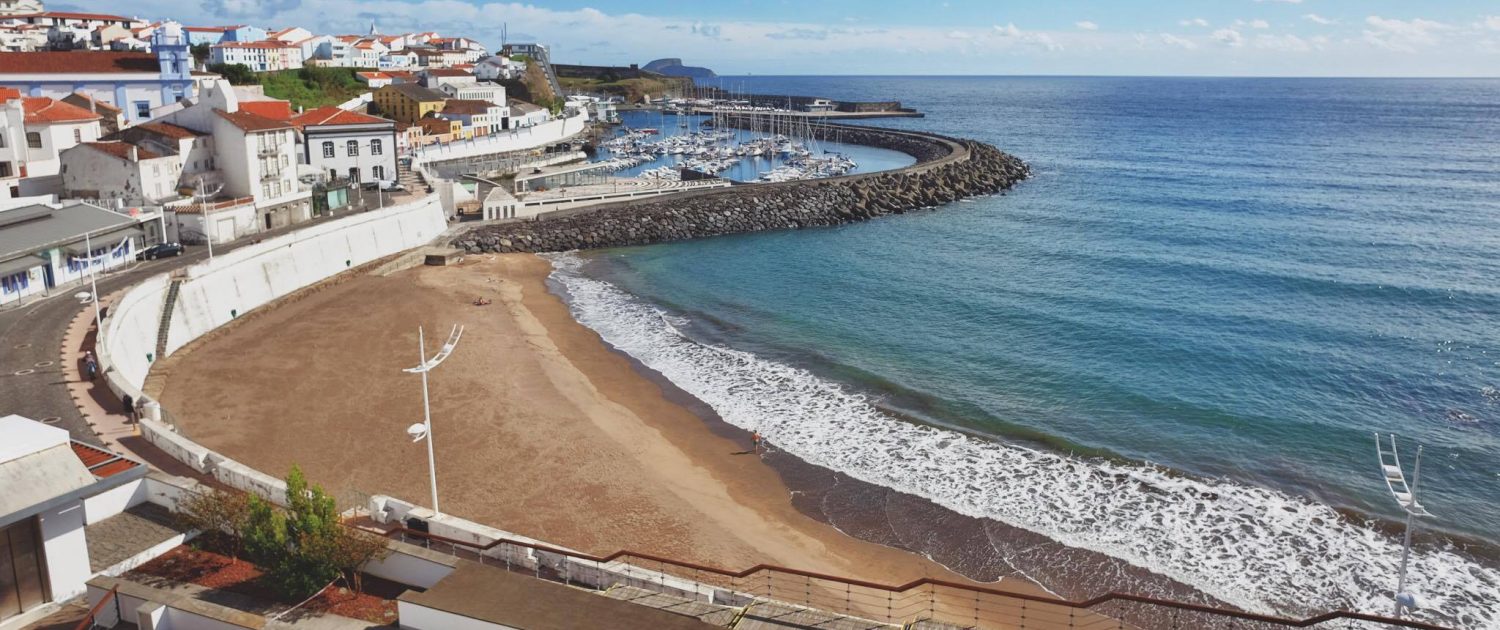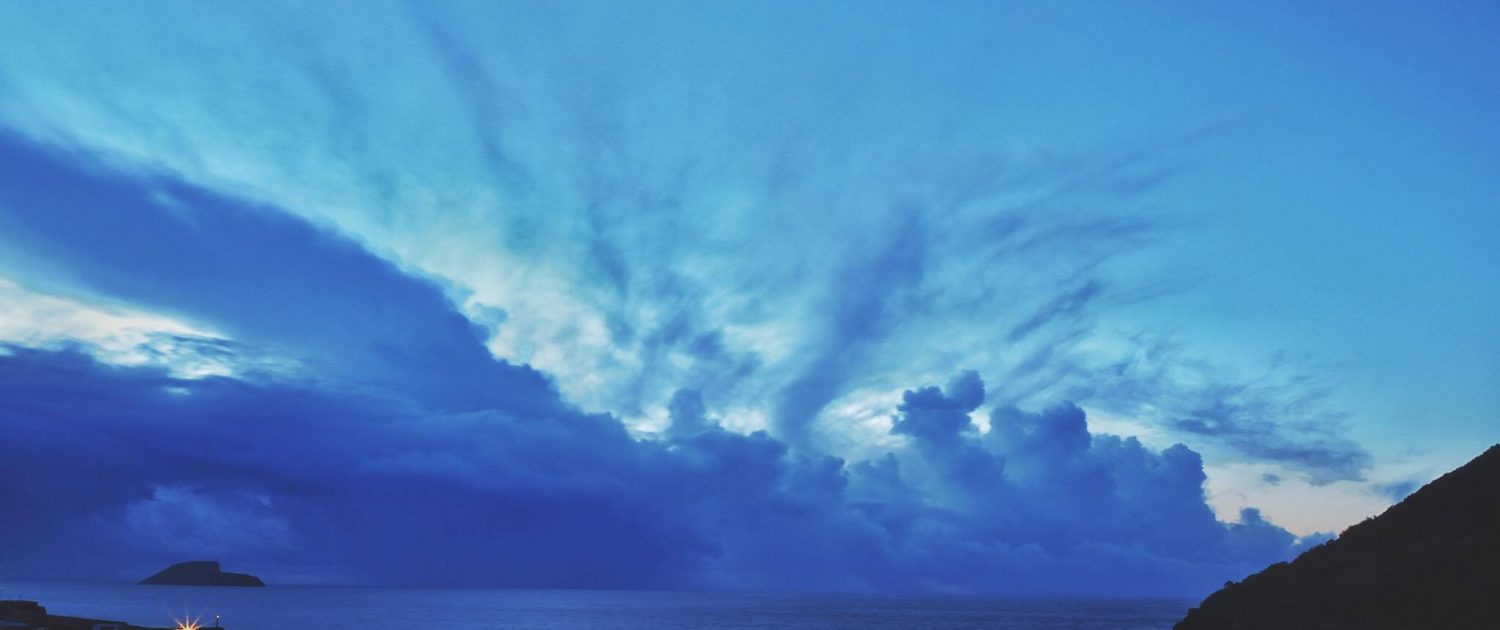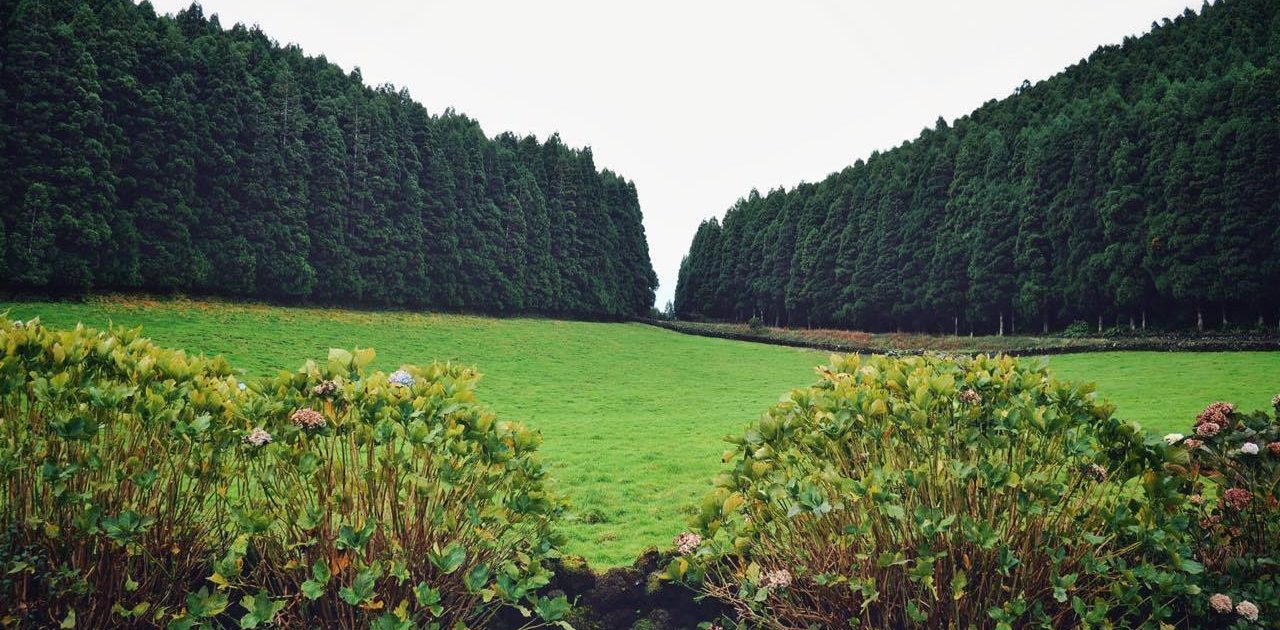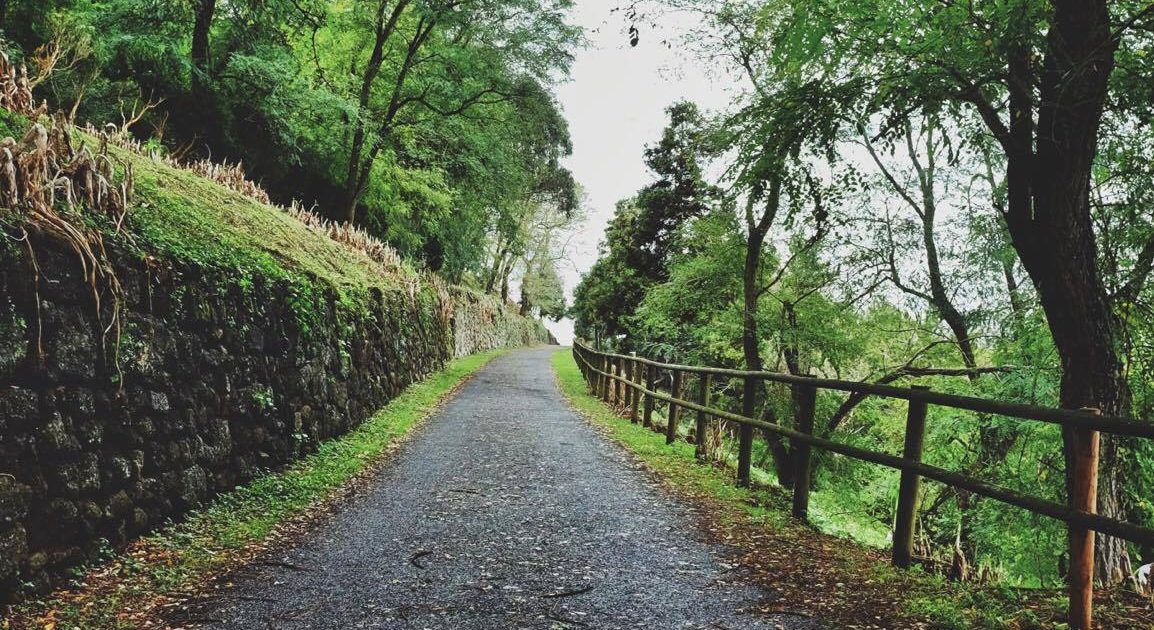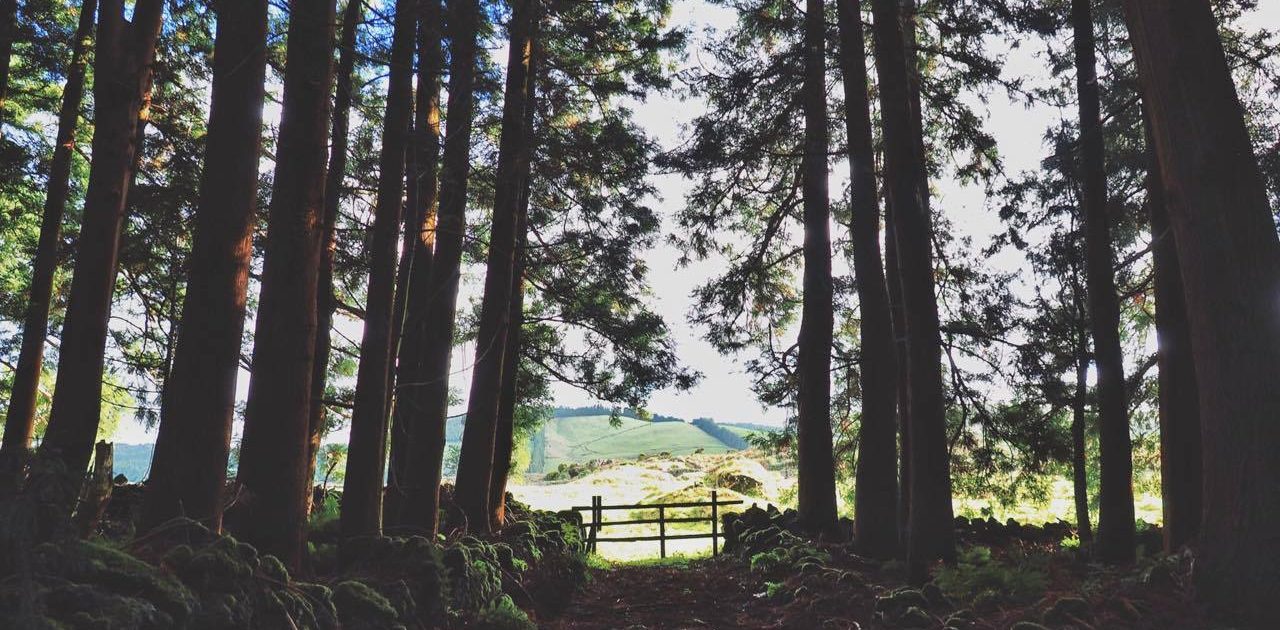In Conversation with Silvia
Silvia is a talented dress designer with a passion for fashion, historic costumes, horses and the arts. I met her in the summer and instantly knew we could work together. Coupled with her warm, enthusiastic and friendly approach to life she has a highly creative eye for design and clothing. What´s more she lives with her family in one of the most beautiful places in the world……. Terceira Island in the Azores, although she works from home she is regularly in Lisbon. Her creative designs have led her to work with film companies as the fashion coordinator and stylish, producing her own collections, private commissions and now fabulous Portuguese riding costumes for ladies.
When she showed me her creations I was immediately captivated. Her fabulous hand made Portuguese riding costumes are stylish feminine and most importantly super flattering. She has added features from history and touches of traditional laces that makes them very special. These days many of the costumes available in the shops are actually just an adaptation of the men´s costume, they lack the feminine touches and correct shaping for the female curves. Silvia is determined to give women riders the opportunity to have something that really looking stunning, that fits in all the right places and is comfortable. Each costume she creates is totally personalised to you. She prefers to work with you to creating your look with fabrics, colours, shape and a perfect fit.
Silvia achieved her fashion degree in the Architecture College of Technical University of Lisbon. She told me “I finished my studies in 1999, and started working in Maria Gonzaga’s Costume Design Workshop in Lisbon, which, at the time, was the largest Costume Design Workshop in Portugal. She designed and made costumes for films, theatre productions and television. I think that it was there, during my training I discovered my passion for period costumes, mainly 18th and 19th century. Howver it was only recently I began to combine both, costumes and horse riding.
I know you have a passion for horses love to hear how it started, do you ride now?
My passion for horses started when I was 8 years old, when I had my first riding lessons at the Campo Grande Riding School, in Lisbon. I´ve had horses in my life ever since that first introduction. At the time, the Portuguese School of Equestrian Art was located in Campo Grande as well, and I used to watch their training their beautiful Lusitanos in the big arena. Since then I continued my riding taking lessons with several instructors, but it was only when I moved to the Azores that I had the chance to have my first horse. I achieved one of my childhood dreams. And only here, in a wonderful place where time doesn’t seem to pass, I could strengthen my relationship with horses, have the opportunity to enjoy them and to really understand what beautiful and simple creatures they are.
Silvia Teixeira
Your costumes are fabulously feminine, as I understand you have researched them through history and this has influenced your designs.
Dr. Gorjão Clara, author of “The Portuguese Riding Costume” explains, “The costume of the Amazona cannot be reduced to a single model only, Nevertheless, there are some common features that permit us to distinguish the Amazona’s costume from that of foreign horsewomen.”Designer
The lace you are using on the blouses in hand made from the Azores it really adds a special style to the costumes.
Laces and embroideries are a traditional typology of the Azorean handicrafts. It’s typical modern use is mostly in home textiles (such as towels and sheets, table centers and a series of lace inserts on linen and cotton) although we can find some older pieces in fashionable accessories, such as gloves and collars.
I was recently invited by the Regional Centre for Handicrafts of the Azores to design a ready-to-wear collection using the traditional handmade laces. Applying these handmade laces in the riding costumes, as well as the beautiful embroideries, is a way to add value and glamour to the already beautiful Portuguese riding costume, making it special and different, and also a way to disclose and promote the work of the fine Azorean handicrafters.
I am inspired everyday by antiques, films and TV series, music, photography, art, nature. My family and friends and of course riding my horse.
Silvia we are so delighted to be working with you and thoroughly looking forward to developing additions items with you.
Images of Silvia´s work by Lena Saugen Photography and Hugo Duarte.
